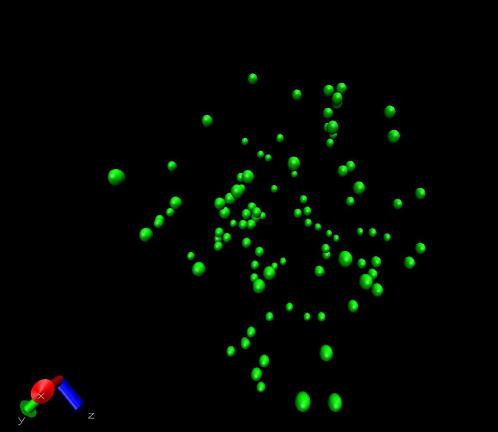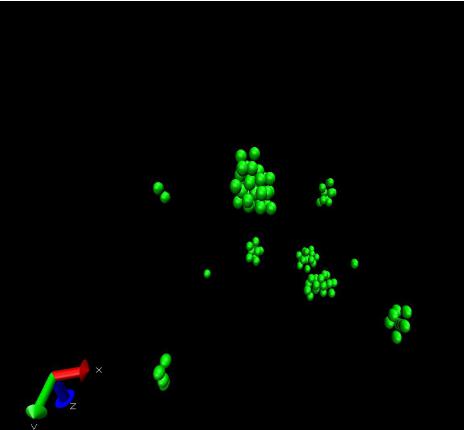Results
Figure 1 represents initially randomly placed spherical particles that are subjected to Brownian motion and molecular interactions. Figure 2 shows the agglomerates formed by colliding particles during the simulation.
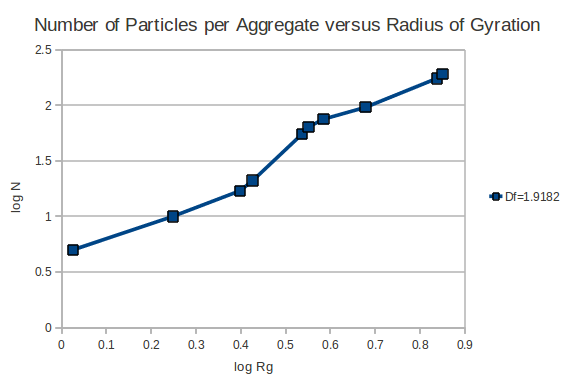 The movie below shows the nanoparticle agglomeration of initially randomly placed 250 primary particles. The particles move according to the Brownian Motion (friction coefficient between particles and surrounding fluid Ɣ = 1.64*10-12 kg/ms and the system temperature T=300K). As the particles collide, they stick to each other and form irregular clusters. Each clusters can then be quantified by the fractal dimension Df.
The movie below shows the nanoparticle agglomeration of initially randomly placed 250 primary particles. The particles move according to the Brownian Motion (friction coefficient between particles and surrounding fluid Ɣ = 1.64*10-12 kg/ms and the system temperature T=300K). As the particles collide, they stick to each other and form irregular clusters. Each clusters can then be quantified by the fractal dimension Df.
For this agglomerate Df is calculated as 1.92 by using a power law relationship between the number of particles and the radius of gyration of the cluster (Figure 3).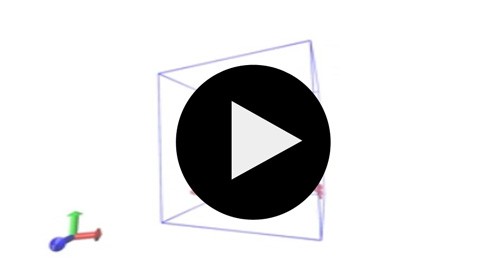
|
Results of the third funding period
In the third funding period of the project the aggregation dynamics between similar aggregates is analyzed with the coarse-graining (CG) method. It foots on the collision probability of the aggregates, a function of the interval between the aggregates and their fractale profile.
Figure 3 indicates the collision probalitity of aggregates from 9 different groups, which are figured by the use of ballistic methods. In form of tables they were further used in coarse-grained ESPResSo simualtions.
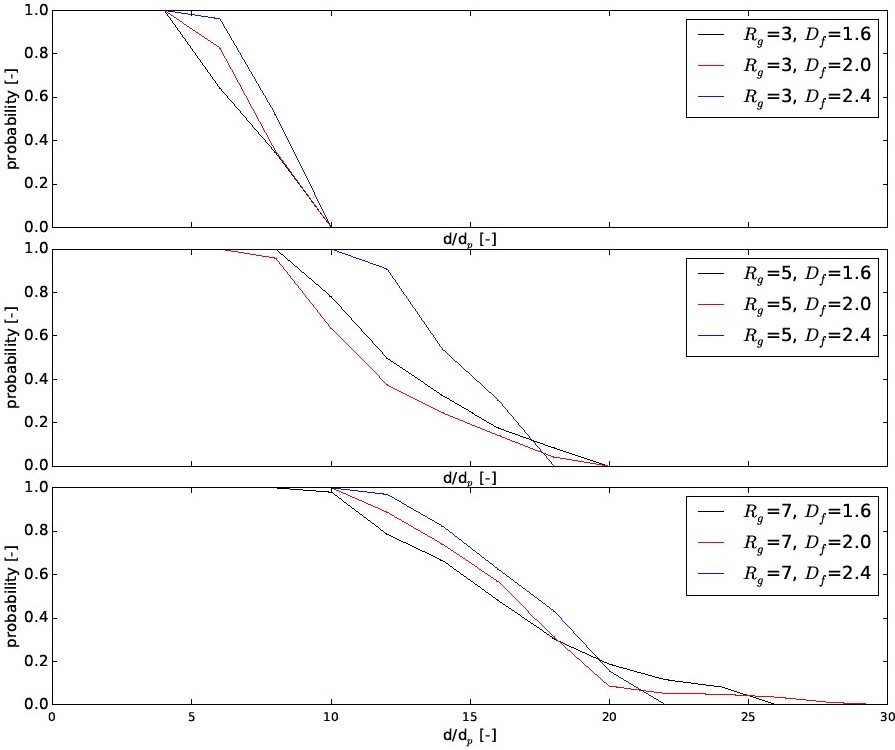 |
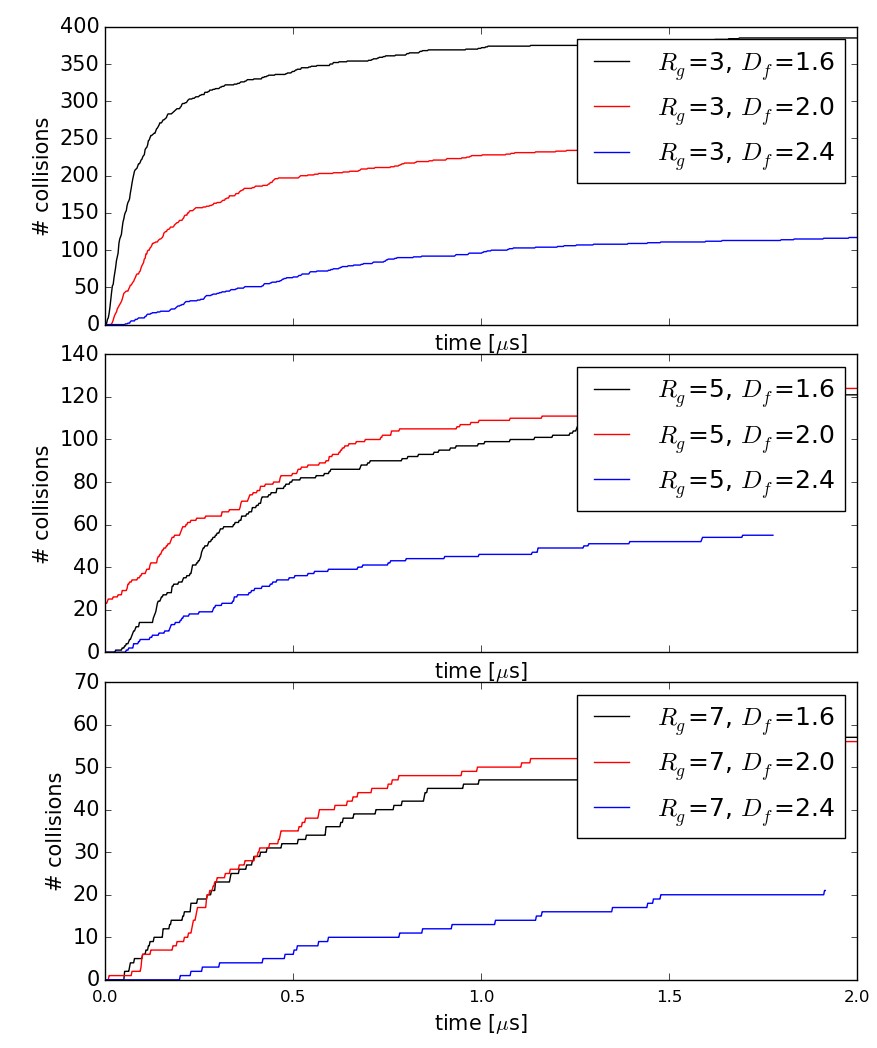 |
|
|
Figure 4 indicates the results of detailed LD simulations, while in figure 5 the comparishon of the results between collision amount in a detailed and a coarse-grained simualation is visible.
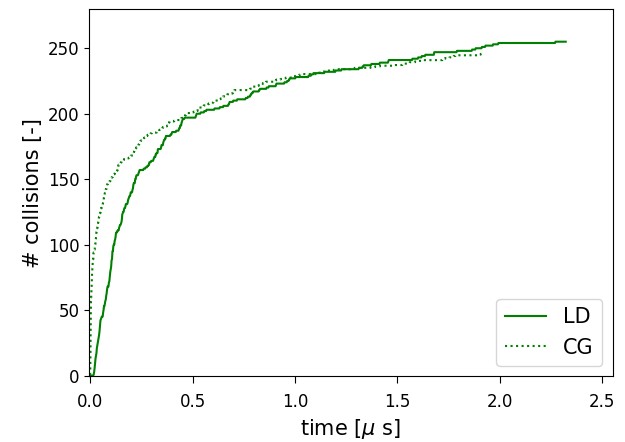 |
|


